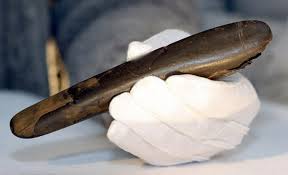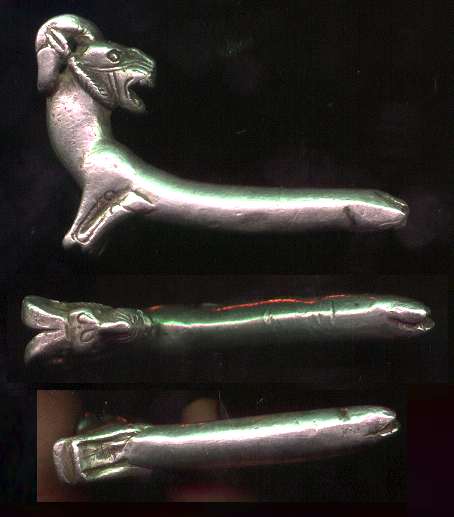In April of 2015, archeologists in Poland made headlines when they unearthed a sex to while excavating an ancient latrine in the city of Gdansk. This news went viral
in no time with plenty of people asking how they had made a sex toy back then and even why they would bother. Too often we think of our ancestors as being “simple and pure” so when revelations like this emerge, it changes not only the way we see our past, but also how we see the present.
 The toy, which is thought to come from the 1700s, is described as a “phallic object” and is made of a leather sheaf which was filled with bristles and has a wooden tip. Researchers believe it may have been dropped in the toilet by the original owner which was a shame since they also believe it was an expensive item. In an interview with a local radio station, Marcin Tyminski from the Regional Office for the Protection of Monuments explained, “It was certainly expensive. Cleaning revealed it was made of high quality leather.”
The toy, which is thought to come from the 1700s, is described as a “phallic object” and is made of a leather sheaf which was filled with bristles and has a wooden tip. Researchers believe it may have been dropped in the toilet by the original owner which was a shame since they also believe it was an expensive item. In an interview with a local radio station, Marcin Tyminski from the Regional Office for the Protection of Monuments explained, “It was certainly expensive. Cleaning revealed it was made of high quality leather.”
But a sex toy from the 1700s is hardly the oldest version of adult entertainment archeologists and other experts have found over the years. In Germany, researchers uncovered a phallus thought to be roughly 28,000 years old. The “highly polished” dildo measured in at nearly 8 inches long and was discovered in 2005 by researchers in Hohle Fels Cave. Other finds across the globe pre-date even this early example, showing that sex toys have played a role in the evolution of human beings from every inch of the globe.
So why are sex toys today seen as such a taboo? Partly because of religious and cultural dogma which has taught the public that sex is dirty, sinful or something which should be done in secret. Also it’s simply a part of evolution. As we became more and more complex in terms of thinking and perception, how we viewed relationships and interactions also became more complex. As did our innate desire for cleanliness. After all sex can be a somewhat messy endeavor and it keeps each person so involved and distracted that they are pretty vulnerable. Evolutionary sociologists believe both of these factors played a role in sex becoming more and more suppressed.
 But the up side to the complexity of issues which have contributed to this view of sex as taboo is that they can undone. While it’s unlikely that the world will ever turn into some 1960s-Flower-Power-Love-In orgy, developing a better understanding of how sex shaped our world and our race may help to demystify it.
But the up side to the complexity of issues which have contributed to this view of sex as taboo is that they can undone. While it’s unlikely that the world will ever turn into some 1960s-Flower-Power-Love-In orgy, developing a better understanding of how sex shaped our world and our race may help to demystify it.
And we’ve come a long way. Even when cultural anthropologists compare the public perception of sex and sexuality with attitudes and opinions from less than a century ago, it’s easy to see we are, in many ways, becoming more and more open when it comes to sex and the effects it has on every aspect of our lives. Today there are more than 50 journals in print that deal with sexuality with another dozen or more titles which enjoyed long press runs but were ultimately discontinued. The body of research on human sexuality continues to grow with modern anthropologists who study sex becoming pop culture icons thanks to books from authors like Mary Roach (Bonk!) and Jessie Bering (Perv: The Sexual Deviant in All of Us).
So while we become more and more opened and enlightened about sex, reminders of how sexual our ancestors were can be a bit unsettling. After all, we’re human and so inclined to think of ourselves as incredibly cutting edge and innovative, but these kinds of discoveries remind us how connected we still are to our roots and how long this kind of change can take to come around. For us, that means even more motivation to develop a better understanding of our own sexuality and how improving that can easily become a powerful and positive force in other areas of our lives.










